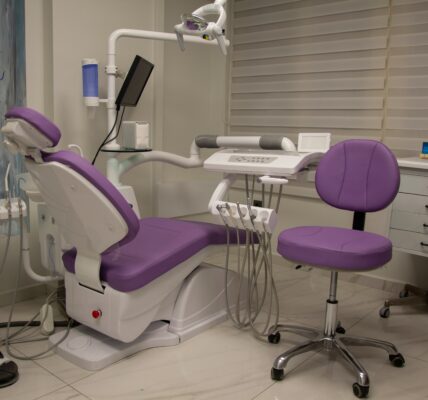Root canal treatments are crucial procedures in modern dentistry, designed to save teeth that are severely damaged or infected. Over the years, these treatments have evolved significantly, thanks to advancements in technology, techniques, and materials. This evolution has led to improved outcomes, reduced discomfort, and a more streamlined process. In this article, we’ll explore how root canal treatments have evolved, highlighting key developments and their impact on patient care.
Early History of Root Canal Treatment
The concept of treating dental pulp dates back centuries, but early methods were rudimentary and often painful. Historically, dental treatments focused more on tooth extraction than on preserving the tooth. The idea of treating the pulp itself began to take shape in the 19th century, but the techniques and tools used were far from what we have today.
In the early 20th century, root canal treatments were performed with manual instruments and limited understanding of root canal anatomy. The procedures were often uncomfortable, with varying success rates. It wasn’t until the latter half of the 20th century that significant advancements began to reshape the field.
The Advent of Modern Techniques
The 1960s and 1970s marked a turning point in root canal treatments with the introduction of modern techniques and materials. Key advancements included:
- Introduction of Rubber Dam: The use of a rubber dam to isolate the tooth during the procedure became a standard practice. This isolation helps prevent contamination from saliva and bacteria, improving the success rate of the treatment.
- Improved Instrumentation: The development of specialized endodontic instruments allowed for more precise cleaning and shaping of the root canals. Stainless steel files were initially used, but they were later replaced by nickel-titanium files, which are more flexible and effective at navigating the complex root canal system.
- Enhanced Filling Materials: Gutta-percha, a biocompatible material, became the standard for filling the cleaned root canals. Its properties help seal the canals effectively, reducing the risk of re-infection.
Technological Innovations
As technology advanced, so did the techniques used in root canal treatments. Some of the most significant innovations include:
- Digital Imaging: Traditional X-rays were replaced by digital radiography, which provides clearer images with less radiation. This advancement allows for more accurate diagnosis and treatment planning, helping dentists visualize the root canal system in greater detail.
- Microscopes: The use of dental microscopes has revolutionized root canal procedures. Microscopes provide high magnification and illumination, allowing dentists to see finer details of the root canal system, which improves the accuracy of cleaning and filling.
- Electronic Apex Locators: These devices measure the length of the root canals with precision, reducing the need for X-rays and improving the accuracy of the procedure. They help ensure that the root canals are cleaned and filled to the appropriate length.
- Laser Technology: Lasers are increasingly used to enhance the cleaning and disinfection of root canals. They can help remove debris and bacteria from the canal system more effectively than traditional methods.
Minimally Invasive Techniques
Recent advancements have focused on making root canal treatments more comfortable and less invasive. Techniques and technologies that support this include:
- Single-Visit Root Canals: In the past, root canal treatments often required multiple visits to complete. Advances in technology and technique now allow many root canals to be completed in a single visit, reducing the number of appointments and overall treatment time.
- Bioactive Materials: The development of bioactive materials that promote healing and stimulate the regeneration of tooth structures has improved the outcomes of root canal treatments. These materials can help support the health of the tooth and surrounding tissues.
- Pain Management: Advances in anesthesia and pain management techniques have significantly improved the comfort of root canal procedures. Local anesthetics are more effective, and sedation options are available for patients with dental anxiety.
Patient-Centric Approaches
The evolution of root canal treatments has also led to a more patient-centered approach. This includes:
- Improved Communication: Dentists now use digital imaging and educational tools to better communicate the procedure and its benefits to patients. This helps patients understand the importance of the treatment and what to expect.
- Enhanced Comfort: Advances in sedation and anesthesia techniques have made root canal treatments more comfortable for patients. Techniques such as conscious sedation and nitrous oxide (laughing gas) help alleviate anxiety and discomfort.
- Post-Treatment Care: Better understanding of post-treatment care has led to improved guidelines for patient care after a root canal. This includes recommendations for pain management, oral hygiene, and follow-up care to ensure the long-term success of the treatment.
The Future of Root Canal Treatments
The field of endodontics continues to evolve, with ongoing research and development aimed at improving root canal treatments further. Future advancements may include:
- Regenerative Endodontics: Research into regenerative techniques aims to promote the repair and regeneration of damaged dental pulp. This could lead to new treatments that restore the health of the pulp rather than removing it.
- Advanced Imaging: The development of even more advanced imaging technologies, such as 3D cone beam computed tomography (CBCT), could provide even greater detail and precision in diagnosing and treating complex root canal cases.
- Robotic Assistance: Robotics and artificial intelligence may play a role in enhancing the precision and efficiency of root canal treatments. Robotic systems could assist with navigation and instrumentation, improving outcomes and reducing the likelihood of complications.
Conclusion
Root canal treatments have come a long way from their early beginnings, thanks to advancements in technology, techniques, and materials. Modern root canal procedures are more comfortable, effective, and efficient than ever before. With continued innovation and research, the future holds even more promise for improving the outcomes and experiences of patients undergoing root canal treatment. By understanding the evolution of these treatments, patients can appreciate the advancements that have made saving their teeth more achievable and less daunting.





